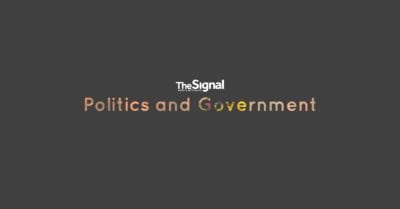Road safety is a critical concern in urban areas, especially around schools where children and pedestrians are highly vulnerable. Speeding motorists pose a significant threat to school zones, increasing the risk of accidents and endangering young lives. To address this issue, many cities are adopting innovative solutions like Speed Radar Signs—specialized speed-monitoring devices designed to encourage safer driving behavior. As an example Elan City and its range of speed radar signs serve as an effective tool to reduce vehicle speeds, raise awareness among motorists, and ultimately create a safer environment for students, teachers, and pedestrians.
Understanding Radar Speed Signs
Radar speed signs, also known as speed display signs or speed indicator devices, are electronic devices that measure the speed of approaching vehicles and display it in real-time. Unlike conventional speed cameras that issue fines, these radars function as behavioral deterrents, reminding drivers of their speed and encouraging them to slow down if necessary.
These radars are usually placed in high-risk areas, such as school zones, pedestrian crossings, and residential neighborhoods. Some advanced models even use flashing lights or color-coded indicators to warn drivers when they exceed the speed limit. Additionally, certain systems can collect and analyze data on traffic patterns, helping city planners make informed decisions about road safety improvements.
Why Radar Speed Signs Are Interesting for School Zones
1. Reducing Speeding and Preventing Accidents
Speeding is one of the leading causes of accidents near schools. According to studies, a pedestrian hit by a vehicle traveling at 30 mph has a four times higher risk of fatal injury than one hit at 20 mph. By installing speed radar signs, cities can effectively remind drivers to slow down, significantly lowering the chances of accidents.
2. Increasing Driver Awareness
Many motorists unintentionally speed through school zones due to distractions or a lack of awareness. Speed indicator devices provide immediate feedback, making drivers more conscious of their speed. The visual cue of seeing their speed displayed in real-time prompts them to adjust their driving accordingly.
3. Encouraging Voluntary Compliance
Unlike traditional speed cameras that penalize drivers with fines, radar speed signs take a softer approach by promoting voluntary compliance. Studies have shown that drivers are more likely to reduce their speed when reminded by a speed display sign rather than when facing a fine. This method fosters a culture of responsible driving without creating resentment among motorists.
4. Collecting Valuable Traffic Data
Some radar speed signs are equipped with data-logging capabilities that record vehicle speeds, traffic volume, and peak speeding hours. This information is crucial for city authorities, helping them identify high-risk areas and implement targeted safety measures such as additional signage, road markings, or speed bumps.
Success Stories: Cities Implementing Radar Speed Signs
Many cities worldwide have successfully integrated speed radar signs into their road safety strategies.
- United States: Several states, including California and Texas, have installed speed display signs near schools. Reports indicate that these radars and some other tips have led to a 15-20% reduction in vehicle speeds in school zones.
- United Kingdom: In London, speed indicator devices have been deployed in multiple school areas, leading to a noticeable decline in speeding incidents. The initiative has been praised for its effectiveness in promoting safer driving habits.
- Australia: Local governments have implemented radar speed signs in various urban areas, contributing to a significant drop in pedestrian-related accidents near schools.
These case studies highlight how radar speed signs can be a cost-effective and impactful solution for improving road safety.
Challenges and Considerations
While radar speed signs offer numerous benefits, there are challenges to consider:
- Limited Enforcement Power: Unlike speed cameras that issue fines, speed display radar signs rely on voluntary compliance, which may not be effective for all drivers.
- Initial Investment Costs: Although these radars are more affordable than traditional enforcement systems, cities need to allocate funds for installation and maintenance.
- Integration with Other Safety Measures: For maximum effectiveness, radar speed signs should be complemented by other safety measures, such as traffic calming strategies, stricter speed limits, and law enforcement patrols.
The Way Forward: Making Radar Speed Signs a Standard Practice
To maximize the benefits of radar speed signs, city planners and policymakers should consider the following steps:
- Expanding Radar Installations: More schools and high-risk areas should be equipped with these radars to create a wider impact.
- Public Awareness Campaigns: Educating drivers about the purpose and benefits of radar speed signs can encourage greater compliance.
- Combining with Other Safety Measures: Integrating radars with speed bumps, pedestrian crossings, and road signs can enhance overall road safety.
- Regular Monitoring and Adjustments: Traffic authorities should analyze the data collected by radar speed signs and make necessary adjustments to improve their effectiveness.
Conclusion
The installation of radar speed signs near schools is a proactive and practical approach to reducing vehicle speeds and ensuring the safety of students and pedestrians. By providing real-time feedback to drivers, these radars encourage responsible driving habits without the need for strict penalties. As more cities recognize their effectiveness, radar speed signs have the potential to become a standard road safety measure, making school zones safer for everyone. Investing in such solutions is not just a necessity but a moral obligation to protect the lives of our children and future generations.






